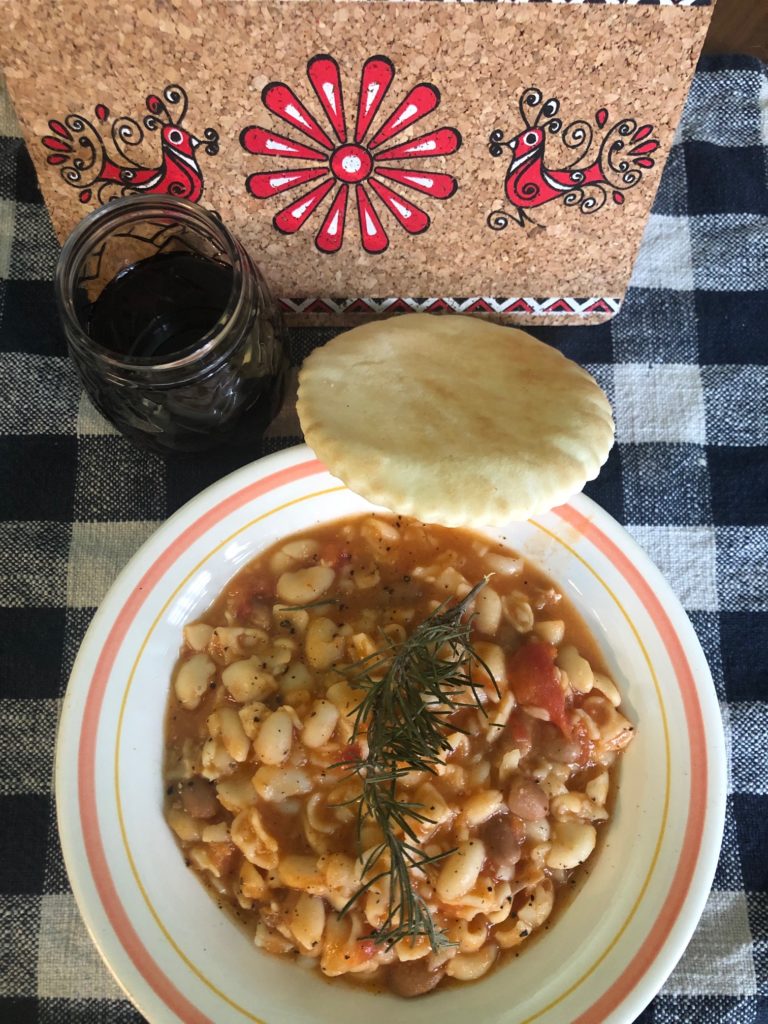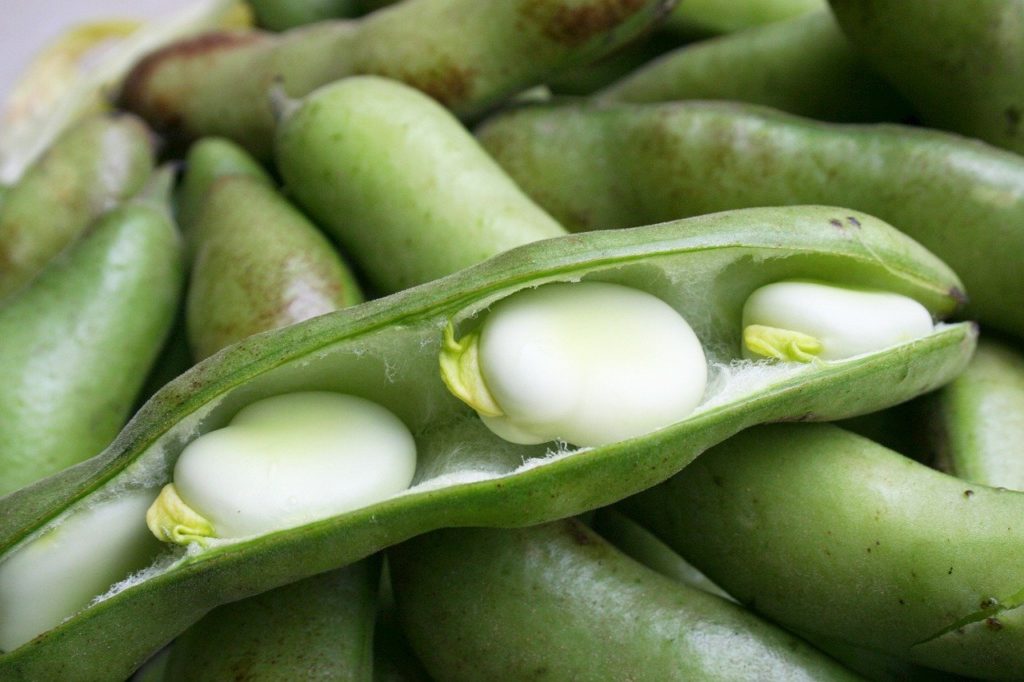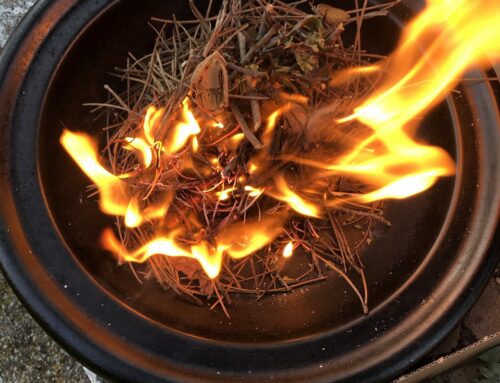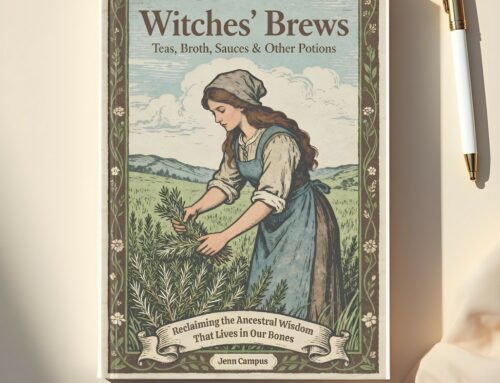
Pasta e Fagioli is one of those dishes where looks can be deceiving. What seems like a humble bowl of pasta & beans has, in fact, so much which lies below the surface.
The humble bean was an essential part of ancestor work in Ancient Rome. The Romans believed there were several groups of ancestral spirits. There were family ancestors, whom we might call the beloved dead. The Lemures, who were typically unburied or died without having the right rituals performed to help them move from the earthly plane. They had their own festival and rituals during the month of May. Finally, there are the Manes, the ones who had “died too soon” or in circumstances where they might have unfinished business. These were the ones who were honored at Feralia.
The Feralia, which takes place on February 21st was a day of public mourning. No weddings could take place, and even the worship of the gods ceased for the day. Feralia is the end of a nine-day ancient Roman festival known as Parentalia.
All Romans celebrated Parentalia; a private family affair to honor the beloved dead. Yet, just as in life, not all of the Ancestors are sound in body and mind. In Roman culture, those particular Ancestors were the Manes and the Lemures. They were the hungry ghosts, and to appease them, the people offered them beans.
Take a deeper dive into these celebrations by reading the February Seasonal Guide: Season of Love.
Pasta e Fagioli History
Since the time of the Roman Empire, legumes have been a staple for the people living on the Italian Peninsula. The Romans embraced a wide variety of them, like fava, peas, chickpeas, and lentils, making stews with them from early on. People have been eating the fava bean since prehistoric times.
During the Renaissance, Caterina di Medici tried revolutionizing Italian cuisine based on French cooking styles. From that point, beans were considered poor people’s food. Beans held that stigma for a long time but were eventually re-embraced by Italians everywhere.
The Magical & Macabre Bean
Hearth Magic is all about creating magic out of the mundane. There is nothing humbler than a bean. Or is there? Romans held beans sacred , because they believed that beans could house the dead. Beans take the shape of an embryo, so it was considered a place to hold the unembodied until they were ready to be reborn.
During marriage ceremonies, husbands and wives exchanged beans. One bean would represent a male embryo, the other female, in which an ancestor could be reincarnated.
Land that has cultivated beans is often more fertile due to the release of nitrogen, and the ancients believed that beans had magical powers – the magical fruit indeed!

How to Make Pasta e Fagioli Magic
Pasta e Fagioli, or “pasta and beans,” is a traditional Italian dish. I suggest you make it because it is nothing short of a magical process, and I think it is a beautiful way to aknowlege the folkloric beliefs about beans and your ancestors– especially the ones who might need some help moving on.
I’ve said it before, and I’ll keep saying that there is nothing more blood-humming magic than making broth. Like tea, my other favorite example of this reflects the seasons, the locality where you live, and can be customized to address whatever issues are going on.
The method for making broth is pretty standard, yet the result will always be different based on the above. First, use what you have on hand to make the base of the broth- bones, veggie scraps, cheese crusts. You will give anything that needs using up a new life by creating broth with it. That in itself is magic. Making something that is profoundly nourishing from almost nothing is one of the most satisfying feelings.
Use what’s in season- in terms of veggies, spices, and herbs to season it. Right now, juniper berries, wild rosemary & sage are in season here, so I used them. Plus, the rosemary and sage are traditional seasonings of Pasta e Fagioli.
Likewise, use what’s local to the same end. I added mirto infused salt to bring a bit of Sardinia into the recipe.
Finally, use particular herbs that could support you at this specific moment. I used Chaga, astragalus, and Schisandra powders for immunity boosting & stress-reducing properties based on what we have going on.
Once you have prepared your broth, strain the components out, and get ready to make your Pasta e Fagioli.
What is Pasta Fazool?
The same dish is also known as Pasta Fazool. In the Neapolitan dialect, it is called pasta e fasule. When immigrants from the Campania region of Italy immigrated to the New English-Speaking World (United States, Canada, Australia), it morphed like the great game of telephone and is known as Pasta Fazool to most of the Italian diaspora.
There are many dialects in Italy, so you’ll often hear people call the same dish slightly different name as you move around the country.
What Kind of Beans Are Used for Pasta e Fagioli?
The traditional beans for Pasta e Fagioli are Cannellini or Borlotti. Dried is best. Cooking dried beans in your broth makes them taste extra delicious. But you can make a quick version with canned beans if you want to make it quick. Pasta e Fagioli is part of Cucina Povera (or peasant food) cuisine. So, the basic principles of use what you have on hand absolutely apply here.
What Kind of Pasta Should I Use for Pasta e Fagioli?
The traditional rule of thumb for pasta shapes to use for Pasta e Fagioli is to use something small. I love using ditalini or orzo. But elbows, lumachine, or small shells work well too.
The trick is to cook the pasta directly in the broth instead of in a separate pot. This releases the starch in the pasta and naturally thickens the soup. This is really the most important step to creating a nice velvety consistency in the final product.
A Note on Authenticity
The recipe for Pasta e Fagioli varies considerably based on the region or town in which it is prepared because it depends on available ingredients. There is no “right” or “authentic” way to make this dish, which makes it even more special because it allows you to incorporate your own regional flair to the dish, which is very authentic.
Pasta e Fagioli Recipe

Pasta e Fagioli
Prep Time: 2 ½ hours
Cook Time: 1 hour
INGREDIENTS:
1½ cups of dried beans, soaked overnight*
1 Parmigiano-Reggiano rind (about 2 ounces), plus some grated for serving
2 medium carrots, peeled and diced
2 celery stalks, diced
1 sprig fresh rosemary
2 bay leaves
½ teaspoon crushed red pepper flakes
sea salt
black pepper
2 quarts of broth
3 tablespoons olive oil
1 large yellow onion, chopped
2 cloves garlic, chopped
1 (14.5-ounce) can whole peeled tomatoes
1 Tablespoon of tomato paste
¾ cup dry white wine
4 ounces dried ditalini pasta
METHOD:
Place beans, cheese rind, carrots, celery, parsley, rosemary, bay leaves, crushed red pepper flakes, and about 2 quarts of broth in a medium soup pot. Bring contents to a boil. Then reduce heat, cover, and simmer, adding water as needed, until beans are tender about 1½ -2 hours. Season with salt and pepper to taste, remove from heat, and let sit 30 minutes. Discard cheese rind and herbs.
Meanwhile, in a large pot, heat olive oil over medium. Cook onion and chopped garlic, stirring occasionally, until softened, 8–10 minutes. Add tomatoes, crush with a wooden spoon, and cook, stirring often, until liquid is almost completely reduced, 12–15 minutes. Then pour in the wine, bring to a boil, and cook until almost completely evaporated, about 5 minutes.
Add beans and their liquid; cook until flavors meld, 12–15 minutes. Add pasta; cook, stirring and adding more water as needed, until a little more than al dente, about 15–20 minutes. Season with salt and pepper.
Serve Pasta e Fagioli drizzled with oil, topped with Parmigiano-Reggiano and more crushed red pepper, if desired. Serves 4-6
*If you want to make the Pasta e Fagioli the same day you can do a quick soak, which will allow you to cook your beans after about an hour. In a large pot, add 6 cups of water for each pound (2 cups) of dry beans. Heat to boiling; boil for 2–3 minutes. Remove from heat, cover and let beans soak for at least 1 hour.
Related Posts:
Parentalia & the Weight of Inheritance: Reverence, Reckoning, & Repair (+Almond Honey Cakes)
5 Ways to Start Building Ancestral Legacy Today
My Family Eats on Less than $400/Month
Medieval Chickpea Flour Pan Cakes






Delicious! I was just looking for a new recipe to try. This one looks great. Love me some beans!